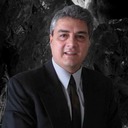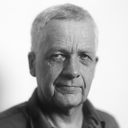0 Likes
در اینکه زنان چگونه موجوداتی هستند و اینکه آیا سرشتشان با مردان متفاوت است سخن های گوناگونی گفته شده. من به دنبال پاسخ به تمامی سوال هایی نیستم که در باره زنان مطرح است من در پی یافتن نگاهی هستم که تا کنون با آن به این موجودات نگریسته نشده و یا کمتر نگریسته شده است. نگاهی که زنان را به خاطر آنچه که هستند و نه آنچه ازآنها انتظار می رود که باشند می ستاید. نگاهی که آنان را برای تفاوت هایشان با دنیای مردانه تحقیر نمی کند و به ویژگی های ذاتی آنها به چشم ابزاری برای لذت جویی مردانه نمی نگرد. نگاهی که زن را نه یک کالای قابل مالکیت و نه یک ابزار جلب توجه و نه موجودی ضروری برای ادامه نسل بشر بلکه به عنوان هویتی مستقل که می تواند رشد کند، کمال یابد و آمال و آرزوهای خود را داشته باشد می بیند.
آنچه در این مجموعه آثار ارائه می شود در واقع تلاشی است به منظور باز کردن دریچه ای رو به همین نگاه. تجسم زنانگی در جلوه گر ترین نوع خود ارائه شده تا بلکه بیننده را بار دیگرمتوجه نوعی از نگاه جامعه به زن نماید که آنچنان شایع و رایج است که تبدیل به رفتاری نا خودآگاه گردیده تا بلکه با بازخوانی این گوشه از ناخودآگاه بیننده او را نسبت به کندکاو در گوشه های دیگر ذهن خود برای یافتن زوایای جدید ترقیب نماید.
There has been much said about what kind of creatures women are and how different, in nature, they are from men.
I am not after finding answers to all the questions concerning women, far from it; I am after a new outlook to women, an outlook which is new or rarely utilized. An outlook that sees women as what they are not what they are expected to be, a view that does not look down upon women for their differences from men, a view that does not see women’s inherent features as a means for men’s pleasure, a view that does not regard women as a possessed property nor a means to attract attention or just a necessity for the mankind to continue existing, BUT as a distinct entity who has her own identity, an identity which can develop, and reach her wishes and desires.
What is presented in this collection is an attempt to open a window to such an outlook; feminism is featured in its most prevalent type, hoping that the viewers would once again be poked to see the stereotypical way the society is looking at women, a way which has become so hackneyed and trite that it is generally taken for granted.
Maybe becoming alert of such subconscious issues residing in the corners of ones mind would help towards becoming conscious of other corners to see things from a new angle.
نمایشگاه آثار " سارا راه انجام " با عنوان " آسمان آبی " دی 1392 گالری سیحون
...





Overview and HistoryTehran is the capital of Iran and the largest city in the Middle East, with a population of fifteen million people living under the peaks of the Alborz mountain range.Although archaeological evidence places human activity around Tehran back into the years 6000BC, the city was not mentioned in any writings until much later, in the thirteenth century. It's a relatively new city by Iranian standards.But Tehran was a well-known village in the ninth century. It grew rapidly when its neighboring city, Rhages, was destroyed by Mongolian raiders. Many people fled to Tehran.In the seventeenth century Tehran became home to the rulers of the Safavid Dynasty. This is the period when the wall around the city was first constructed. Tehran became the capital of Iran in 1795 and amazingly fast growth followed over the next two hundred years.The recent history of Tehran saw construction of apartment complexes and wide avenues in place of the old Persian gardens, to the detriment of the city's cultural history.The city at present is laid out in two general parts. Northern Tehran is more cosmopolitan and expensive, southern Tehran is cheaper and gets the name "downtown."Getting ThereMehrabad airport is the original one which is currently in the process of being replaced by Imam Khomeini International Airport. The new one is farther away from the city but it now receives all the international traffic, so allow an extra hour to get there or back.TransportationTehran driving can be a wild free-for-all like some South American cities, so get ready for shared taxis, confusing bus routes and a brand new shiny metro system to make it all better. To be fair, there is a great highway system here.The metro has four lines, tickets cost 2000IR, and they have segregated cars. The women-only carriages are the last two at the end, FYI.Taxis come in two flavors, shared and private. Private taxis are more expensive but easier to manage for the visiting traveler. Tehran has a mean rush hour starting at seven AM and lasting until 8PM in its evening version. Solution? Motorcycle taxis! They cut through the traffic and any spare nerves you might have left.People and CultureMore than sixty percent of Tehranis were born outside of the city, making it as ethnically and linguistically diverse as the country itself. Tehran is the most secular and liberal city in Iran and as such it attracts students from all over the country.Things to do, RecommendationsTake the metro to the Tehran Bazaar at the stop "Panzda Gordad". There you can find anything and everything -- shoes, clothes, food, gold, machines and more. Just for the sight of it alone you should take a trip there.If you like being outside, go to Darband and drink tea in a traditional setting. Tehranis love a good picnic and there are plenty of parks to enjoy. Try Mellat park on a friday (fridays are public holidays), or maybe Park Daneshjou, Saaii or Jamshidieh.Remember to go upstairs and have a look around, always always always! The Azadi Tower should fit the bill; it was constructed to commemorate the 2500th anniversary of the Persian Empire.Tehran is also full of museums such as:the Contemporary Art Museumthe Abghine Musuem (glass works)the 19th century Golestan Royal Palace museumthe museum of carpets (!!!)Reza Abbasi Museum of extraordinary miniaturesand most stunning of all,the Crown Jewels Museum which holds the largest pink diamond in the world and many other jaw-dropping jewels.Text by Steve Smith.